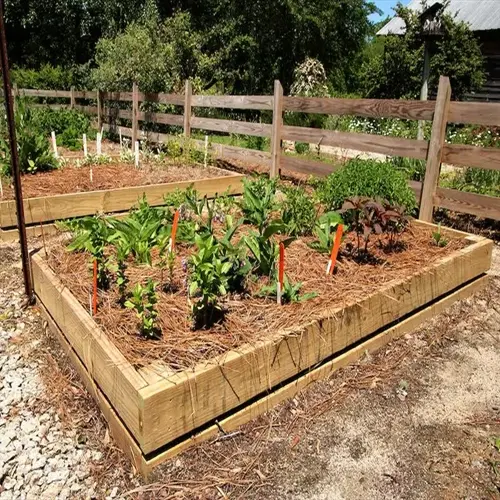When to Start Seeds Indoors: Ultimate Guide

Written by
Olivia Mitchell
Reviewed by
Prof. Charles Hartman, Ph.D.Figure out when to initiate planting seeds indoors based on your local frost date and USDA planting zones.
For example, start tomatoes 6 weeks before the last expected frost date (peppers are 8 weeks indoors).
Using a soil thermometer or heat mat, make sure your substrate is at an optimal temperature of 75-85°F for your warm-season seeds (tomatoes, peppers, etc).
Start seedlings for cold-tolerant crops (broccoli) much sooner than for heat loving crops (cucumbers).
Consider adjusting your indoor seeding dates for urban heat islands or high elevation climatic zones (microclimate).
To prevent transplant shock acclimate or harden off seedlings for 7-14 days before transplanting.
Article Navigation
Understanding when to start seeds indoors involves germinating seeds indoors in favorable conditions before growing plants outside. When you start seeds indoors, you have control over light, temperature, and moisture levels, while also reducing the risk of unpredictable weather conditions harming your delicate seedlings.
It's more cost-effective to start seeds indoors than to purchase plants from a nursery. You also have access to unusual varieties that may not be found locally. Additionally, starting seeds indoors prolongs your growing season. You can harvest earlier and potentially protect your plants from freezing damage from a late frost.
This manual emphasizes the importance of precise timing in the growth of diverse plants, along with fundamental methods for promoting healthy development. Furthermore, we debunk common myths surrounding seed starting. You will also become more confident using basic, research-supported methods in your own practices.
Beginners find success by starting small. Experiment with a few easy crops first. Gardening involves learning through practice. Your efforts reward you with healthy, productive plants.
Essential Setup for Seed Starting
When selecting containers, consider root sensitivity. Biodegradable pots made of peat or coconut coir will decompose naturally. These will even help prevent transplant shock occurring from delicate roots. Plastic trays have value when starting plants that are more delicate, such as tomatoes. Always be cautious not to disturb fragile roots when working with cucumbers or squash.
Seeds typically require certain temperature ranges for germination. For example, tomatoes prefer temperatures of 75-85°F (24-29°C), while lettuce prefers cooler temperatures of 60-70°F (15-21°C). Peppers require higher heat levels in the 80-85°F (27-29°C) range. Heat mats can be beneficial, especially for tropical plants that may struggle to thrive in cooler rooms.
Save money with DIY alternatives! Egg cartons work wonderfully for shallow-rooted herbs, and you can turn cut-up milk jugs into mini-greenhouses. Just add drainage holes to yogurt containers! You can always look for materials to reuse instead of buying new trays, which can save you half or more of the cost.
Keep a close eye on temperatures. Cool-season crops, such as broccoli, germinate at temperatures ranging from 60 to 70°F (15-21°C). Check the soil temperature daily with a thermometer. Adjust the mat and/or placement in the room as necessary. Providing proper heat mitigates slow germination and weak seedlings.
Temperature Control
- Heat Mats: Essential for warm-season crops like tomatoes and peppers requiring 75-85°F (24-29°C) soil temperature
- Thermostats: Maintain consistent temperatures; prevent overheating during germination phase
- Ambient Heat: Position near household heat sources if mats unavailable
- Monitoring: Use soil thermometer to verify optimal conditions
Lighting Solutions
- Full-Spectrum LEDs: Energy-efficient option for 14-16 hour daily cycles
- Positioning: Keep lights 2-4 inches (5-10 cm) above seedlings at all times
- Timers: Automate light cycles to ensure consistent daily duration
- Intensity: Measure with lux meter; minimum 5,000 lux for healthy growth
Soil Requirements
- Sterile Mix: Prevent diseases with commercial seed-starting blends
- DIY Recipe: Combine 1 part compost, 1 part vermiculite, 1 part coconut coir
- pH Balance: Maintain neutral 6.0-7.0 range for nutrient absorption
- Moisture Control: Pre-moisten to field capacity before planting seeds
Budget Alternatives
- Containers: Repurpose yogurt cups or egg cartons with drainage holes
- Heat Sources: Utilize top of refrigerator for consistent warmth
- Humidity Control: Use plastic bags instead of domes for germination
- Lighting: South-facing windows supplemented with reflector panels
Humidity Management
- Domes/Covers: Maintain 70-80% humidity for germination
- Ventilation: Gradually increase airflow after sprouting
- Monitoring: Use hygrometer to track humidity levels
- Transition: Remove covers completely once true leaves appear
Step-by-Step Sowing and Care
Plant seeds at a depth suitable for their size. Tiny lettuce seeds only need a light dusting of soil. Tomato seeds need to be buried at twice their diameter.Large beans need to be planted one inch deep. Then cover gently, as if tucking your child in for the night.
Moisture is the most important factor. Soil should feel like a sponge that you have wrung - wet but not dripping. When you press it lightly, it acts like a sponge should. Seeds drown if conditions are waterlogged. Dry soil stops growth cold. Spray surfaces twice a day with your spray bottles.
You may recognize true leaves by their unique shape. True leaves will appear after the rounded seed leaves have emerged. True leaves have distinctive edges, such as a tomato's jagged edge or a pepper's smooth, oval edge. It is a signal that the plant is ready for a stronger light.
Germination needs warmth and darkness. Cover trays with plastic domes. Once sprouts emerge, remove covers immediately. Seedlings demand bright light and air circulation. Lower temperatures slightly toughen stems.
Preparation
- Soil Moistening: Hydrate seed-starting mix until it holds shape when squeezed but releases no water
- Container Filling: Press mix firmly into cells leaving ¼ inch (0.6 cm) space below rim
- Tool Setup: Prepare labels, spray bottle, and planting dibber before handling seeds
- Environment Check: Verify heat mat temperature reaches 75°F (24°C) for warm-season crops
Planting Technique
- Seed Depth: Bury seeds at 2x their width - tomatoes at ¼ inch (0.6 cm), lettuce surface-sown
- Spacing: Plant 2-3 seeds per cell; thin to strongest seedling after true leaves emerge
- Covering: Use vermiculite for light-sensitive seeds; black plastic for darkness-requiring varieties
- Labeling: Note crop name, variety, and sowing date with waterproof marker
Germination Phase
- Humidity Control: Maintain 70-80% humidity with plastic domes until first sprouts appear
- Watering: Mist surface 2x daily using spray bottle; avoid disturbing seeds
- Temperature: Keep soil at 75-85°F (24-29°C) for peppers/tomatoes; 60-70°F (15-21°C) for brassicas
- Light Management: Provide darkness for covered seeds; remove covers immediately at sprouting
Seedling Care
- Light Adjustment: Position LEDs 2-4 inches (5-10 cm) above seedlings; raise as plants grow
- Water Transition: Switch to bottom-watering in trays when true leaves develop
- Air Circulation: Run oscillating fan 4 hours daily to strengthen stems
- Temperature Reduction: Lower to 65-70°F (18-21°C) after germination
Growth Maintenance
- Fertilizing: Apply ¼-strength fish emulsion weekly after second true leaf appears
- Thinning: Snip weaker seedlings at soil level with scissors; avoid pulling
- Monitoring: Check daily for damping off, discoloration, or pest issues
- Rotation: Turn trays 180° every 2 days for even light exposure
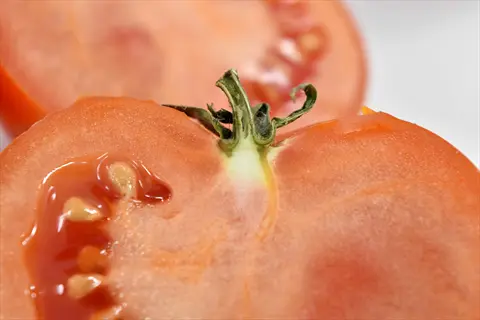
Tomato Seeds
- Planting Depth: Sow at ¼ inch depth (0.6 cm) in consistently warm soil maintained at 75-85°F (24-29°C) for optimal germination conditions
- Germination Requirements: Requires 5-10 days with evenly moist soil and darkness during initial sprouting phase before light exposure
- Transplant Strategy: Bury stems deeper during transplanting to encourage additional root development along the buried stem sections
- Light Management: Provide 14-16 hours of daily light after germination using full-spectrum LEDs positioned 3 inches above seedlings
- Temperature Control: Maintain nighttime temperatures above 60°F (15°C) to prevent chilling injury that stunts early growth stages
- Common Error: Starting seeds more than 6 weeks before last frost consistently results in leggy plants with weak structural integrity
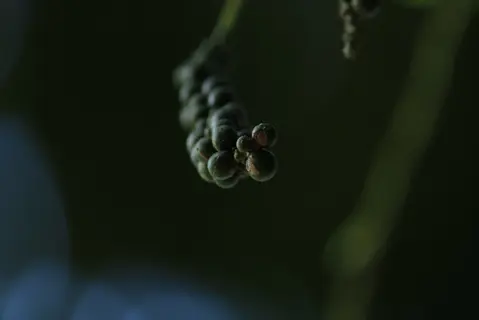
Pepper Seeds
- Planting Depth: Plant at ¼ inch (0.6 cm) below soil surface requiring higher heat levels of 80-85°F (27-29°C) for successful seed activation
- Germination Timeline: Expect 10-21 days for emergence which is significantly slower than tomatoes requiring extended heat mat usage
- Root Protection: Maintain warm root zone conditions until transplanting since cold exposure below 55°F (13°C) permanently damages cellular development
- Light Requirements: Ensure intense light levels above 7,000 lux to prevent weak stems that cannot support developing fruit later in season
- Water Technique: Use bottom-watering exclusively after sprouting to keep foliage dry and minimize fungal disease transmission risks
- Growth Mistake: Insufficient light duration leads to spindly growth that cannot support heavy pepper production during fruiting stages
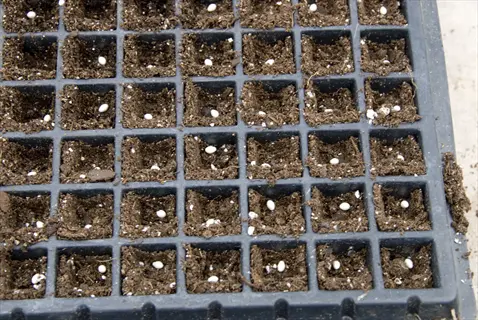
Lettuce Seeds
- Planting Method: Surface-sow without soil covering since lettuce absolutely requires direct light exposure for successful germination activation
- Temperature Range: Germinates best at 60-70°F (15-21°C) with cooler conditions preventing bitter flavor development in mature leaves
- Moisture Criticality: Keep soil constantly moist but not waterlogged as drought stress triggers premature bolting and bitter flavors
- Thinning Protocol: Space seedlings 2 inches apart after first true leaves form to ensure adequate air circulation between plants
- Light Adjustment: Provide moderate light intensity around 5,000 lux since excessive intensity causes leaf scorching in tender greens
- Spacing Error: Overcrowding creates humid microclimates that encourage mold growth and impede proper air circulation around seedlings
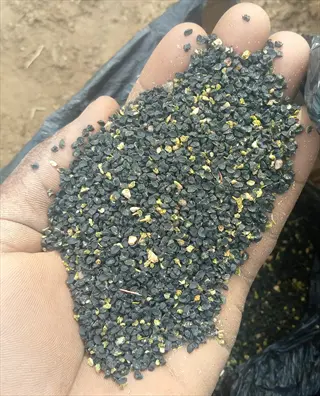
Onion Seeds
- Planting Depth: Sow ½ inch deep (1.25 cm) in cooler 65-70°F (18-21°C) soil conditions ideal for bulb development initiation
- Germination Period: Emergence occurs in 7-14 days requiring consistent moisture levels without saturation that causes rot
- Foliage Management: Trim green tops to 3 inches (7.5 cm) height periodically to redirect energy toward bulb expansion underground
- Daylight Awareness: Start 10 weeks before last frost to ensure sufficient growth before critical day-length triggers bulbing process
- Temperature Sensitivity: Protect from temperatures below 50°F (10°C) which can initiate premature flowering instead of bulb formation
- Timing Mistake: Late sowing misses essential long-day photoperiod requirements causing undersized bulbs with poor storage qualities
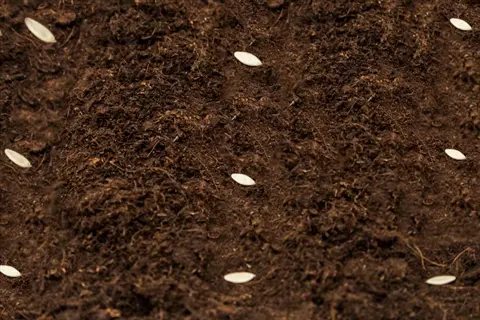
Cucumber Seeds
- Planting Depth: Sow 1 inch deep (2.5 cm) in warm 75-85°F (24-29°C) soil to support rapid germination within optimal conditions
- Humidity Needs: Maintain 70-80% humidity under plastic domes until sprouting occurs typically within 3-10 days after planting
- Root Sensitivity: Transplant before roots circle container edges since damaged roots severely stunt vine growth and productivity
- Light Intensity: Provide high light intensity above 8,000 lux for stocky stems capable of supporting heavy fruiting later in season
- Support Training: Install vertical supports immediately after transplanting to encourage upward climbing growth habit from early stages
- Handling Error: Rough handling during transplant consistently damages fragile root hairs critical for water and nutrient absorption
Transplanting and Hardening Off
Hardening off refers to the gradual process of acclimatizing indoor seedlings to the outdoors. Bring them outside for a short duration each day, gradually increasing the time spent outdoors over a period of 7-14 days. This prevents sunscalding and windburn damage to delicate leaves. The acclimation process helps create natural resilience in your plants.
Before transplanting, check the soil temperatures. Tomatoes require soil at a minimum temperature of 60°F (15°C). Peppers need a soil temperature of at least 65°F (18°C). Cool-season crops, such as lettuce, can tolerate soil temperatures as low as 45°F (7°C). A soil thermometer placed at the suitable planting depth will provide an accurate reading.
Take care with soft plants, such as cucumbers, and ensure they are shielded from wind with cloth barriers. The broccoli transplants were hardy enough to withstand light frosts. Before either was moved, both types were watered deeply; this reduces root stress as they make the transition.
Watch for recovery signs after transplanting. New growth appears in 3-5 days. Temporary wilting resolves overnight. Strong roots anchor firmly within a week. Avoid fertilizing until plants show vigorous growth.
Days 1-3: Initial Exposure
- Duration: 2-4 hours in full shade during warmest part of day (10am-2pm)
- Protection: Use windbreak barriers like cardboard or cloth screens
- Monitoring: Check for leaf curling/wilting every 30 minutes
- Conditions: Begin only when outdoor temps exceed 55°F (13°C)
Days 4-7: Increasing Exposure
- Sunlight: Introduce 2 hours of morning sun (8-10am) before shade
- Wind Exposure: Remove barriers for 1-hour intervals
- Night Prep: Bring indoors if temps drop below 45°F (7°C)
- Duration: Extend outdoor time to 6 hours daily
Days 8-10: Full Conditions
- Sun Exposure: Tolerate 4+ hours of direct sun including midday
- Wind Tolerance: Sustain 5-10 mph winds without protection
- Overnight: Leave outdoors if temps stay above 50°F (10°C)
- Stress Signs: Minor wilting acceptable if plants recover by evening
Days 11-12: Pre-Transplant Prep
- Soil Prep: Water seedlings deeply 24 hours before transplanting
- Root Inspection: Check for root-bound signs; gently tease roots if needed
- Weather Check: Confirm 48-hour forecast without frost or heavy rain
- Timing: Transplant late afternoon to minimize sun stress
Days 13-14: Post-Transplant Monitoring
- Watering: Maintain consistently moist soil for first 72 hours
- Shock Signs: Watch for temporary wilting or leaf drop
- Recovery: New growth appears within 3-7 days for healthy plants
- Frost Protection: Keep row covers ready for unexpected cold snaps
Seeds to Start Indoors and When
When starting seeds indoors, organize your seed starting by weeks before the last frost. Crops like onions, for example, require a 10-16 week beginning period indoors. For zone 5 gardeners, the best time to start is between February 1 and 15. Zone 7 will want to start these between January 1 and 15. Celery and artichokes should be treated gently because of their slow germination process.
Mid-season crops, such as tomatoes, require an indoor seed-starting time of about six to eight weeks. For Zone 5, tomatoes are best started indoors around March 15, while in Zone 7, they should begin around February 15. Peppers also need a little extra bottom heat to germinate successfully. Eggplant does better when the temperature is stable and without drafts.
Late-starting plants, such as cucumbers, thrive with just 3-4 weeks of indoor growth. Zone 5 plants are typically planted around April 10. Zone 7 starts March 10. Use biodegradable pots to prevent root damage during transplanting.
Direct-sow root vegetables and beans outdoors. They dislike transplanting. Peas and corn establish better in garden soil. Save indoor starting for tender plants needing longer growing seasons.
Early Starters (10-16 Weeks Before Frost)
- Onions: Require 10 weeks; start early for bulb development
- Leeks: Need 12 weeks; slow germination benefits from head start
- Celery: 14-week minimum; sensitive to temperature fluctuations
- Artichokes: 16-week requirement; need consistent warmth
Mid-Season Starters (6-8 Weeks Before Frost)
- Tomatoes: Optimal at 6 weeks; prevents legginess
- Peppers: 8-week requirement; need extra heat for germination
- Eggplant: 8 weeks; slow initial growth benefits from indoor start
- Broccoli/Cabbage: 6 weeks; cold-tolerant but benefit from controlled start
Late Starters (2-4 Weeks Before Frost)
- Cucumbers: 3 weeks; fast-growing and sensitive to root disturbance
- Squash: 2-3 weeks; germinates quickly in warm soil
- Melons: 4 weeks; require consistent warmth above 70°F (21°C)
- Sunflowers: 3 weeks; easy germination but transplant carefully
Direct-Sow Recommended
- Root Vegetables: Carrots, radishes (disturbance stunts growth)
- Beans: Fast germination; roots establish better outdoors
- Peas: Cool-weather crops; direct-sow when soil reaches 45°F (7°C)
- Corn: Sensitive to transplant shock; requires block planting
Flowers and Herbs
- Petunias: Start 10 weeks before frost; need light for germination
- Basil: Begin 6 weeks prior; requires warm soil above 70°F (21°C)
- Parsley: 10-week start; slow germination benefits from soaking
- Marigolds: 6 weeks; easy starters tolerant of various conditions
How to Determine Your Start Date
Utilize USDA zone maps to determine your last frost date. Zone 5 averages April 30. Zone 7 averages frost for March 30. Count backwards from this date for each crop. You can use online resources to refine your data by your ZIP code.
Microclimates play a significant role in the growth of seedlings. Due to urban heat islands, urban gardens were seeded 7 days before trials. South slopes longer get 10 days. Coastal zones experience delays of 7-10 days due to cooler spring temperatures. Above 2,000 ft (610 m), high elevation reduces 1 week for each 1,000 ft (305 m) additional elevation.
Examples illustrate differences among zones. Zone 5 tomatoes begin on March 15. Zone 7 starts on February 22. Zone 5 peppers should be started in a greenhouse on March 1, while Zone 7 peppers should be started on February 7. Soil temperatures must be at least 60°F (15°C) before planting warm-season crops outdoors.
Thermometers let you monitor soil temperatures. Cool-season crops, such as peas, thrive in soil with a temperature of 45°F (7°C), while tropical plants prefer a temperature of 70°F (21°C). Check soil temperature 4 inches deep around 10 AM. Use black plastic mulch to warm the soil faster for heat-loving selections.
USDA Zone Frost Dates
- Zone 3-4: Last frost May 15-June 10; start tomatoes 8 weeks prior (March 20-April 15)
- Zone 5-6: Last frost April 7-May 1; start peppers 8 weeks prior (February 7-March 1)
- Zone 7-8: Last frost March 22-April 15; start lettuce 4 weeks prior (February 22-March 15)
- Zone 9-10: Minimal frost risk; start warm crops 2-4 weeks before coolest month
Microclimate Adjustments
- Urban Areas: Heat islands accelerate spring by 1-2 weeks; start seeds 7 days earlier
- South Slopes: South-facing gardens gain 3°F (1.6°C); plant 10 days before zone average
- Valleys/Frost Pockets: Delay planting by 2 weeks; use row covers for protection
- Coastal Regions: Ocean buffers extend cool springs; add 7-10 days to seed starting
Soil Temperature Guides
- Cool Crops (Lettuce/Peas): Plant when soil reaches 45°F (7°C) at 4" depth
- Warm Crops (Tomatoes): Minimum 60°F (15°C); use soil thermometer for verification
- Tropical Crops (Peppers): 70°F (21°C) minimum; black plastic mulch accelerates warming
- Germination Tests: Bury thermometer at seed depth at 10am for accurate readings
Historical Weather Tools
- NOAA Data: Access 30-year climate averages for precise local timing
- Phenology Indicators: Start tomatoes when lilacs bloom; plant corn when oak leaves emerge
- Cooperative Extensions: Local offices provide zone-specific planting calendars
- Digital Tools: Online calculators customize dates using ZIP code
Special Case Adjustments
- High Altitude: Subtract 1 week per 1,000 ft (305 m) elevation above 2,000 ft (610 m)
- Container Gardens: Soil warms faster; start seeds 1 week later than in-ground
- Greenhouse Transitions: Harden off when outdoor temps match greenhouse lows
- Succession Planting: Stagger start dates every 2 weeks for continuous harvests
5 Common Myths
There is a common misconception, especially among new gardeners, that seeds need total darkness to germinate and grow.
It is true some seeds do not require any light, however, many seeds such as lettuce, petunias, and begonias require some light for germination and to get started. These seeds, called photoblastic seeds, rely on specific wavelengths of light to trigger biochemical processes at the beginning stages of germination. When these light-dependent seeds are covered with soil, the soil blocks the necessary light required for germination. Varieties that require darkness, like calendula, do, however, benefit from a cover of black plastic. As always, the seed packet will have instructions, and light requirements can vary a lot across different plants.
There is a prevalent misunderstanding about the level of natural light available on window sills to grow healthy seedlings indoors.
In the winter and early spring, the intensity of sunlight rarely reaches the minimum amount of 5,000 lux that is needed for healthy seedlings, leading to long and weak stems. Even in southern facing windows, glass blocks or filters out 40-60% of necessary light. By adding supplemental full-spectrum LED lights 2-4 inches above the plants for 14-16 hours each day, etiolation will be prevented and you will have stocky transplants that can withstand outdoor conditions after you have hardened them off.
Many gardeners mistakenly believe that starting seeds earlier than the recommended time will lead to stronger, more robust plants.
Starting seeds to early can lead to extreme root binding because the young plants will outgrow their containers long before they are ready to be transplanted into the garden, causing irreversible stress and diminished growth. No matter how well rooted the seedlings are in their containers, they will be under constant competition for limited nutrients and space. Also, it seems like gardeners may sometimes forget that winter humidity can be very low while plants still need water frequently, causing leaf desiccation. Following the crop-specific lead time (2-8 weeks before last frost) will help deliver more vigorous transplants while avoiding wasting resources on weaker specimens.
There's a common myth that sterilized seed-starting mixes aren't necessary if you're using normal garden soil.
Garden soil contains fungal pathogens like Pythium and Rhizoctonia, which can lead to damping-off disease, and can kill seedlings within days of emergence. These organisms thrive in warm, moist indoor conditions, unlike outdoor environments where you find natural balancing organisms. Commercial seed-starting mixes are heat sterilized to destroy pathogens, while also retaining the pH and moisture retention properties that are needed for the delicate stages of germination.
A lot of people think that hardening off seedlings is a matter of choice, especially for cold-tolerant plant types.
Even frost-resistant plants like kale and broccoli will suffer significant transplant shock without a gradual acclimation to outside conditions. Seedlings started indoors will not have cuticles for outdoor protective factors or UV tolerance, so after only a few hours of sunlight exposure, they can become sunscalded. Wind desiccation can destroy cell structure, and temperature variations can impair root functioning. The 7-14 day process of hardening plants will not only build up waxy cuticles, but adapt cells for outdoor conditions.
Conclusion
Exact timing turns seed starting from uncertainty into almost complete confidence. You gain weeks of growing season. This means a few weeks of early harvest and bigger and stronger plants. Your diligence with the calendar protects the tender seedlings from changing weather and climate.
The journey covers container selection, temperature management, seeding, gradual hardening, and transplanting. Each part builds on the previous part. You create the best conditions at every step. This systematic approach yields healthy plants that are ready for the garden.
Once you have a solid understanding of the basic principles, branch out and try some uncommon varieties. Maybe you can find some rare tomatoes or colorful peppers. And write down the varieties that produce best in your area. Stick to the fundamentals while experimenting with new routines. Gardening is all about creative problem-solving!
Next, decide which of your first seeds to plant. Check your local frost date today. Gather your containers and your soil mix. Start small - with one tray and some of the easier crops, like lettuce. Your garden journey starts right now with a bit of preparation.
External Sources
Frequently Asked Questions
What month should you start seeds indoors?
Timing varies by plant type and location. Calculate backwards from your last frost date: tomatoes 6 weeks prior, peppers 8 weeks, and cold-tolerant crops like broccoli 6-8 weeks earlier. Always reference seed packets for crop-specific schedules.
How to start seeds indoors for beginners?
Begin with these essential steps for successful indoor seed starting:
- Use sterile seed-starting mix in containers with drainage
- Maintain consistent soil temperatures (70-85°F for warm crops)
- Position grow lights 2-4 inches above seedlings
- Water gently using spray bottles to avoid disturbing seeds
- Begin hardening off 7-14 days before transplanting outdoors
Do all seeds need to be started indoors?
No, many vegetables and flowers grow better with direct sowing. Root crops like carrots and radishes, plus quick-germinating plants like beans and peas, typically prefer outdoor sowing. Sensitive or long-season crops benefit most from indoor starting.
What containers are best for starting seeds?
Ideal containers include:
- Biodegradable pots for root-sensitive plants like cucumbers
- Plastic cell trays with drainage holes for reusable setups
- Soil blockers that eliminate containers entirely
- DIY options like egg cartons (add drainage holes)
- Fabric pots for large seedlings like trees and shrubs
Is it better to germinate seeds in soil or paper towel?
Soil sowing is generally safer for seedling roots. While the paper towel method works for germination tests, transferring fragile sprouts risks root damage. Exceptions include stubborn seeds like peppers, which benefit from pre-soaking or towel germination before planting.
What to do after seeds sprout indoors?
Post-sprouting care includes:
- Immediately provide 14-16 hours of daily light
- Lower temperatures by 5-10°F to strengthen stems
- Begin bottom-watering when true leaves develop
- Run fans 2-4 hours daily to prevent fungal diseases
- Transplant to larger containers if roots outgrow cells
Can I use potting soil to start seeds?
Regular potting soil risks damping-off disease. Instead, use sterile seed-starting mix with finer texture for delicate roots. These mixes maintain ideal moisture balance and prevent fungal pathogens common in unsterilized garden soil or standard potting mixes.
What are the hardest seeds to start indoors?
Challenging seeds include:
- Parsley (slow germination needing consistent moisture)
- Carrots (sensitive to transplant shock)
- Certain flowers requiring light exposure to germinate
- Delicate herbs prone to damping-off disease
- Seeds needing precise temperature stratification
How late can I seed in the fall?
Fall seeding depends on your first frost date. Count backwards using days to maturity plus harvest period. For example, kale can be planted 8 weeks before frost, while garlic goes in just before ground freeze. Microclimates like south-facing slopes extend planting windows.
Can I start seeds in egg cartons?
Yes, but with limitations. Egg cartons work for initial germination but are too shallow for root development. Transfer seedlings within 2 weeks to deeper containers. Always puncture drainage holes and monitor closely for rapid drying in small cells.
